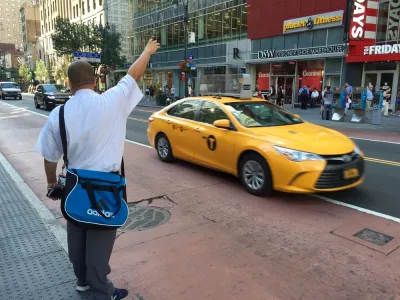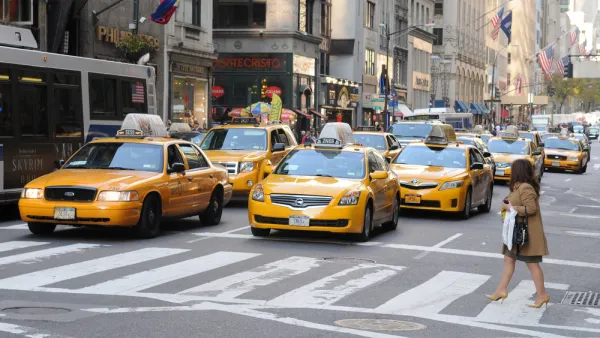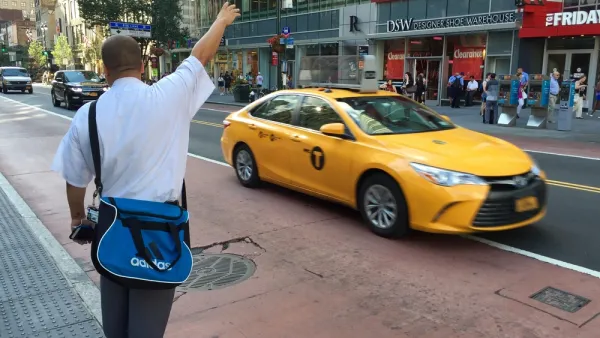Many low- and moderate-income Americans use ride-hailing services to reach essential destinations, but few find the services affordable.

A new study published in the Journal of the American Planning Association (JAPA) reveals the distinct ways that low- and moderate-income households use ride-hailing services. Megan McGlinchey summarizes the study’s results in the Uncovering JAPA blog.
“[The study] found that a higher proportion of their respondents had used ride-hail at least once compared to rates from less targeted studies. Usage was reportedly even more frequent among members of households without a car, reinforcing the notion that ride-hail meets different needs for lower-income and no-car households that may be obscured by general trends.” People without access to cars found ride-hail more important for filling gaps in the existing mobility system.
“Although only 36 percent of zero-car respondents deemed ride-hail to be affordable, they were nonetheless more likely to rely on it for practical trips such as attending medical appointments or grocery shopping.” This signals a need for more affordable ride-hailing services, particularly as “Three-quarters of zero-car respondents cited cost as the main reason that they did not use ride hail more often (compared to 52 percent of respondents with cars).”
The study concludes that the benefits of new mobility modes are distributed unevenly across demographics, and disaggregating data to understand these trends is important to achieving equitable service. “Ride-hail services can be seen as one tool within a city's broader mobility ecosystem, and targeted actions like subsidies can help ensure that this transit method reaches people who would benefit most from it.”
FULL STORY: Expanding the Benefits of Ride-Hail to Lower-Income Households

Analysis: Cybertruck Fatality Rate Far Exceeds That of Ford Pinto
The Tesla Cybertruck was recalled seven times last year.

National Parks Layoffs Will Cause Communities to Lose Billions
Thousands of essential park workers were laid off this week, just before the busy spring break season.

Retro-silient?: America’s First “Eco-burb,” The Woodlands Turns 50
A master-planned community north of Houston offers lessons on green infrastructure and resilient design, but falls short of its founder’s lofty affordability and walkability goals.

Test News Post 1
This is a summary

Analysis: Cybertruck Fatality Rate Far Exceeds That of Ford Pinto
The Tesla Cybertruck was recalled seven times last year.

Test News Headline 46
Test for the image on the front page.
Urban Design for Planners 1: Software Tools
This six-course series explores essential urban design concepts using open source software and equips planners with the tools they need to participate fully in the urban design process.
Planning for Universal Design
Learn the tools for implementing Universal Design in planning regulations.
EMC Planning Group, Inc.
Planetizen
Planetizen
Mpact (formerly Rail~Volution)
Great Falls Development Authority, Inc.
HUDs Office of Policy Development and Research
NYU Wagner Graduate School of Public Service




























